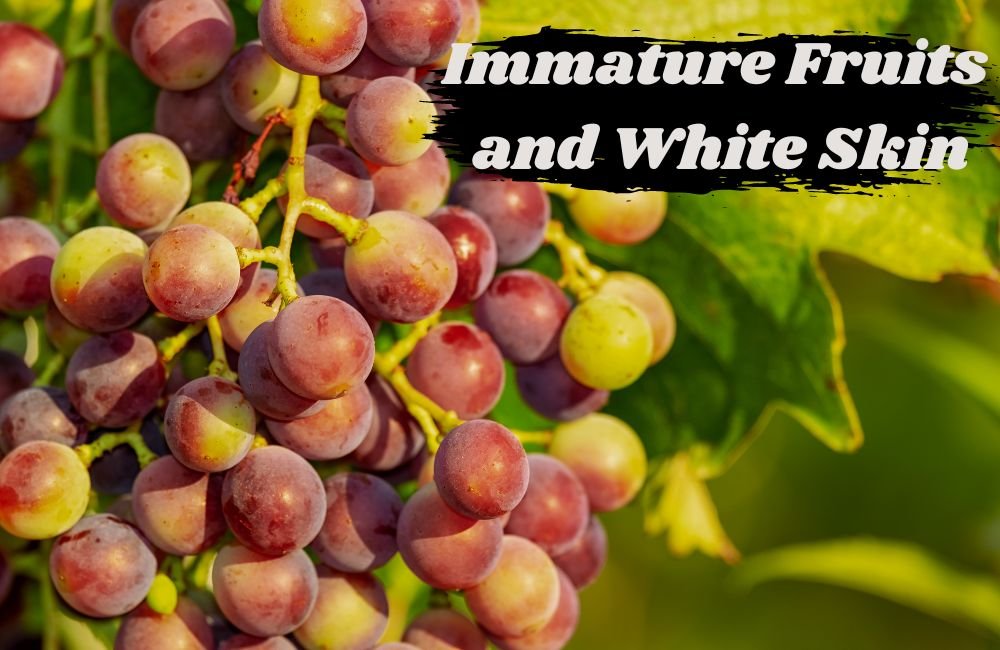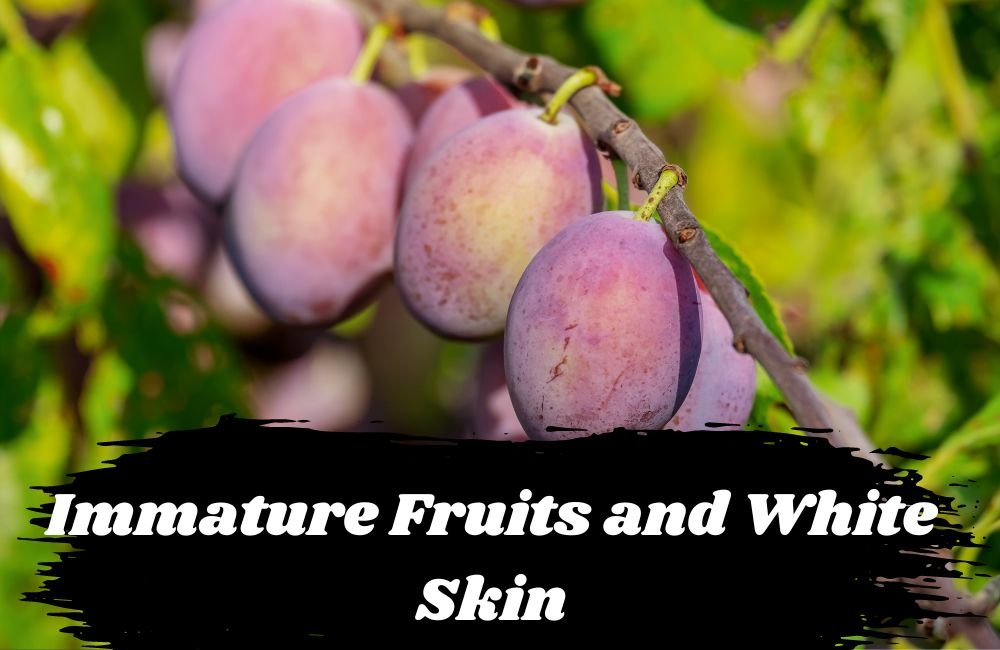

Have you ever felt amazed by Immature Fruits and White Skin? This article will teach you about them. We will discuss their special features and uses in cooking.
The Immature Fruits and White Skin protects them from sunlight. It also stores essential nutrients for growth. We will show you unusual ways to use these fruits. For example, you can pickle them or make tasty jams.
Get ready for a tasty journey of Immature Fruits and White Skin! We will explore the work of hei aromas in cooking. You will learn wisdom from old recipes. You will also see modern takes on classic dishes. We will show you how to cook with immature fruit flavors, which will help improve your skills.
Understanding Immature Fruits
Immature Fruits are often ignored compared to ripe ones but they have special traits that matter. These Immature Fruits and White Skin have not grown fully. Yet they have their charm in plants and cooking.
Immature fruits have a solid feel. Not soft like ripe fruits, they are complex and firm. Their firmness helps them keep shape when cooked, makes them suitable for some dishes.
Fruits lack bright colors, too. Ripe fruits come in vivid hues, but immature ones are often green, yellow, or white. Their bland shades show they are still developing. They have not yet made the pigments that give ripe fruits color.
Flavors in immature fruits are also mild. Ripe fruits burst with complex, intense tastes, but immature fruits have subtler flavors. They may taste slightly tart or dry. Their full flavors have not bloomed yet.
Though subtle now, immature fruits play a key role. They are a vital step from blossom to ripe fruit. Through many changes at this stage, their final form and taste emerges.
Role of White Skin in immature fruits
Thw concept of Immature Fruits and White Skin makes people conscious, fruits have white skin when they are young. This white covering is significant. It helps keep the fruit safe. It protects the fruit from too much sunlight.
Blocking Harsh Sun
Whwn you think about Immature Fruits and White Skin, so the main job of the white skin is to shield the immature fruit from the intense sun. Too much sun can hurt the soft inside of the fruit. It can cause burns or discoloration. The white skin bounces the harmful sun rays away. It stops the rays from getting inside the fruit.
Helping Photosynthesis
The white skin blocks too much sun but it also lets in some light. This light helps the fruit grow through photosynthesis. Photosynthesis makes food for the fruit. It gives the fruit energy to develop properly.
Concept of Immature Fruits and White Skin
The Immature Fruits and White Skin stores essential nutrients, too. As the fruit grows, the skin gives these nutrients to the inside flesh. This steady supply helps the fruit mature in the right way.
Using immature Fruits in New Ways
Immature Fruits and White Skin have unique tastes and textures. These can be used to make new, interesting dishes. They add a twist to usual recipes and create new flavor experiences.
Pickled Treats
A popular way to use immature fruits is pickling. Their firm texture makes them great for preserving in vinegar or brine. Pickled green tomatoes are tangy and refreshing in sandwiches and salads. Pickled green mangoes add zest to curries and chutneys.
Cooking Adventures
immature fruits can also be cooked in many ways. Shredded green papaya is used in salads and stir-fries in Southeast Asian food. immature jackfruit has a meaty feel. It can replace meat in dishes like curries and tacos.
Jams and Chutneys Delight
The subtle flavors of immature fruits work well in jams and chutneys. Green tomato jam balances tart and sweet flavors nicely. Green mango chutney adds spicy, tangy notes to any meal.
High-Heat Wok Hei Flavor with Immature Fruits
Cooking immature fruits with high heat brings unique flavors. When stir-frying them in a hot pan or wok, the intense heat creates a smoky taste called “wok hei”. This smoky flavor enhances other ingredients in the dish.
High-heat cooking works well for immature fruits. They stay firm and don’t fall apart like ripe ones do. Stir-frying immature fruits using very high heat is a great way to cook them.
Family Tips Help Make Great Dishes
I got a lot of cooking advice from my family over the years. These handed-down tips helped me make tasty soups, soft dough, and more. One essential tip: ask questions before trying a new recipe. Understanding the ingredients, steps, and risks helps avoid mistakes.
Checking on things before starting is wise. You’ll cook with confidence, knowing what to expect. Passed-down wisdom from loved ones guides you. Following their tips often leads to success.
High Heat Techniques and Unique Ingredients
For delicious dishes, intense heat is key. By cooking foods at high temps, you unlock complex, tasty flavors that enhance the taste.
Like scorched scallions, they add smokiness and bitterness that pairs nicely with other ingredients but, you need cast iron pans and woks, and keep the high heat.
Early Cooking Methods
Old recipe books provide a glimpse into past cooking styles. For example, Elizabeth Hawar’s book contains a “chocolate jumble” recipe that shows early use of chocolate in baking.
The recipe mixes cocoa nibs, sugar, and bread and carries seeds. It reveals the bitterness of early chocolate and the use of savory items in sweets back then.
Unique Recipes and Their Modern Reinterpretations
Many old recipes like the codling tart from Elizabeth Hawar’s cookbook can get new life. Recipe restarts take the first recipe and change it with new stuff, tools, and tastes.
Like, a new online baking contest asked folks to make jumball recipe with today’s ways and things. The results showed the skills and new ideas of the bakers while honoring the first dish.
Seed Cake and Caraway Seeds
Seed cake, a classic British baked good, was once the only cake that used caraway seeds for flavor. The caraway seeds added an earthy and slightly licorice-like taste to the cake, which often had extra flavors of sack or other fortified wines.
Though seed cake is not as famous now, it remains an integral part of British food history and shows how spices and flavors were used in creative ways in traditional baking.
Using “Plague Water” in Old Recipes


A strange method used in old recipe books involved “plague water” in savory puddings and other dishes plague water was a mix of vinegar, herbs, and spices. People thought it could protect against the plague.
We doubt plague water worked as medicine but its use in recipes shows people then believed it had protective powers. And they didn’t mind using unusual ingredients while cooking.
Conclusion
In the end, as we learn about Immature Fruits and White Skin, we go on a tasty trip filled with plants and cooking magic. Understanding white skin’s protective role in immature fruits opens up new chances for creative meals. From using immature fruits for pickling and cooking to exploring passed-down cooking tips, each dish carries wisdom from the past and new takes.
Blending high-heat wok hei flavors with scorched ingredients brings out each dish’s authentic taste and creates a mix of flavors that excites the taste buds. As we explore Immature Fruits and White Skin and old cooking practices and unique recipes, baking’s rich history unfolds and shows how flavors evolved over time.
Also Read: 6 Mind Blowing Facts About Cofeemanga
FAQs:
What makes immature fruits different from ripe ones?
immature fruits are complex, often green or white, and have a mild taste. Their firm body is good for some meals. Their plain taste lets you cook creatively.
What is the concept of Immature Fruits and White Skin?
The Immature Fruits and White Skin shields immature fruits from too much sun. It lets in some light for photosynthesis, also stores nutrients that help the fruit grow.
How can you cook with immature fruits?
You can pickle immature fruits, make jams or chutneys with them, or stir-fry them. Their firm texture and mild taste make them great for unique, tasty dishes.